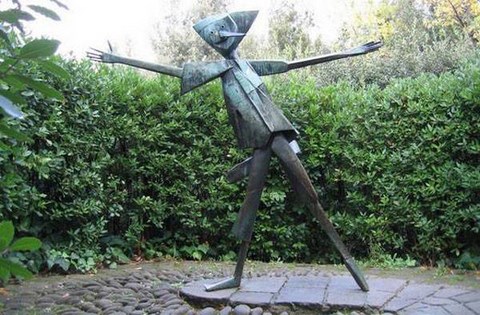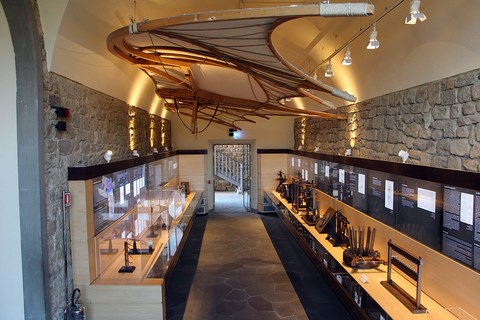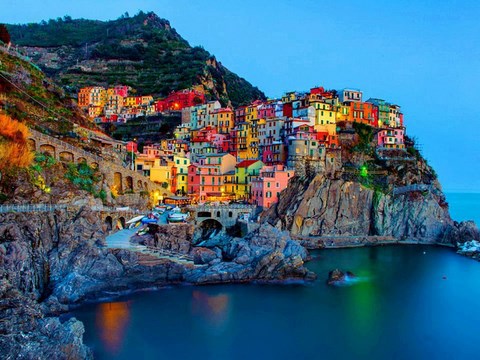The Surroundings
The Cilene hotel is located in one of the most beautiful landscapes of Italy, in Versilia in Viareggio, a stone's throw from the beach and in front of the Pineta di Ponente and near the most exclusive beaches of Tuscany: Forte dei Marmi, Lido di Camaiore , Viareggio.
Artistic jewels such as Lucca, Pisa, Pietrasanta, Torre del Lago Puccini are just a few kilometers from the Hotel, Florence, the Cinque Terre, the Marble Quarries of Carrara, Siena, Volterra and many other cities and characteristic towns are within easy reach.
The Hotel Cilene is also just a short walk from the center of Viareggio, the train station can also be reached on foot, and you can also visit local attractions such as the citadel of the carnival and the Matilde Tower and the wonderful seafront Promenade.
We are also waiting for you in the Carnival period to admire the pharaonic papier-mâché floats known all over the world.
Enjoy the carneval
The pinewood of Viareggio
Lucca
Dapprima insediamento ligure e quindi etrusco, nel 180 a.C. Lucca divenne una colonia romana. A seguito della caduta dell`Impero Romano, la città fu conquistata dai Goti e nel corso del VI secolo divenne la capitale del Ducato longobardo di Tuscia. Al caduta di quest`ultimo, divenne sede del Marchesato di Toscana.
Nel 1119 Lucca si costituì come libero comune, per poi trasformarsi in una Podesteria, in cui il potere era retto dai rappresentanti della nuova classe dei mercanti, che stava cominciando a svilupparsi in quel periodo. Accanto all`industria della seta, si sviluppò anche un`intensa attività bancaria, grazie alla quale Lucca divenne un importante centro economico a livello europeo.
Nello stesso periodo, essendo attraversata dalla via Francigena, Lucca divenne una tappa fondamentale del pellegrinaggio che portava i cristiani dell`Europa settentrionale a Roma.
Coinvolta nelle guerre tra Pisa e Firenze e nella lotta tra Guelfi e Ghibellini, e dominata per qualche tempo da Uguccione della Faggiuola, da Castruccio Castracani e dalla famiglia Guinigi, Lucca divenne una repubblica nel 1430 e mantenne la propria indipendenza fino al 1799.
Nel 1805 Napoleone, su richiesta del senato di Lucca, costituì il Principato di Lucca e Piombino, assegnandolo alla sorella Elisa e al marito di lei, Felice Baciocchi.
Con il Congresso di Vienna e la Restaurazione fu creato il Ducato di Lucca, attribuito ai Borboni di Parma. A Maria Luisa di Borbone succedette il figlio, Carlo Ludovico (1824), che regnò fino al 1847, quando il ducato entrò a far parte del Granducato di Toscana.
Nel 1860 Lucca e il Granducato di Toscana furono annessi al Regno d`Italia.
Consigliamo una visita guidata delle mura
Park of Collodi
If you have children, the Pinocchio Park in Collodi is very nice and fun
Leonardo a Vinci museum
The "Leonardo da Vinci Machines" exhibition is located in the city center, in one of the most famous streets of Florence.
The "Niccolai Collection" Artigiani Fiorentini Collection is composed of over 50 models, many of which can be used in their operation, distributed in four rooms: a large room, where you can find civilian machines, one dedicated to flight machines , another to war machines and the most recent to the collection of anatomical models. The interactive museum is particularly suitable for families and schools. But very important for those who want to deepen the engineering knowledge of the great genius.
Inside the museum it is possible to view the documentary on the life and works of Leonardo on the big screen.
The museum also has a "Caffè Michelangiolo" dining area that has an agreement with the entrance to the exhibition and a bookshop full of publications and gadgets.
Water Park Cecina
The aquatic entertainment village
In Cecina, immersed in the Etruscan coast, you can discover a corner of Hawaii immersing yourself in the water park, nominated as best water park in Italy at the ParksMania Awards.
All'acqua Village Cecina offers a healthy mix of adrenalin and relaxation suitable for audiences of all ages.
Hundreds of metres of slides! News 2018: Loko, fire chute, a journey to the center of the volcano of Lua Pele, the Volcano Island, thanks to the technology of 3D Projecting mapping. And yet the children's Island by Moku Pago, a pool with playground and slides suitable for children!
Under umbrellas Hawaiians feel the lure of the volcano-Mauna Loa theatre with the show Aqua Mantica hosting international acrobats.
Wai, the funny circus school for kids with activities and games, in collaboration with the school of circus Maanga.
And then so many dining options to suit all tastes! And before you go off jumps to Photo Village and choose your souvenir photos!
Volterra
La città, celebre per l'estrazione e la lavorazione dell'alabastro, è stata una delle principali città-stato della Toscana antica (Etruria), fu sede nel medioevo di un'importante signoria vescovile avente giurisdizione su un'ampia parte delle Colline toscane. Oggi conserva un notevole centro storico di origine etrusca (di quest'epoca rimangono la Porta all'Arco, magnificamente conservata; la Porta Diana, che conserva i blocchi degli stipiti; gran parte della cinta muraria, costruita con ciclopici blocchi di pietra locale; l'Acropoli, dove sono presenti le fondamenta di due templi, vari edifici ed alcune cisterne; numerosissimi ipogei utilizzati per la sepoltura dei defunti), con rovine romane (fra tutte il Teatro ad emiciclo) ed edifici medievali come la Cattedrale, la Fortezza Medicea ed il Palazzo dei Priori sull'omonima piazza, centro nevralgico dell'abitato.
Veláthri (Velathri 2.svg, il nome etrusco di Volterra), faceva parte della confederazione etrusca, detta dodecapoli etrusca o lucumonie. Il re (e gran sacerdote) era detto luchmon (lucumone). Il nome della città etrusca è ben leggibile nella serie di monete conservate al Museo Guarnacci[4]. In latino la città assunse il nome di Volaterrae, dal quale derivano il greco Οὐολατέρραι[5] Ouolatérrai e l'attuale nome italiano.
http://www.comune.volterra.pi.it/home
Antro del Corchia
La Grotta Turistica Antro del Corchia rappresenta la principale attrazione del corchiapark, il principale sistema turistico dell’Alta Versilia che offre la possibilità di vivere la montagna in ogni suo aspetto. Sul Monte Corchia, oltre alla Grotta Turistica, potrete visitare le antiche Miniere di Argento Vivo, fare trekking lungo meravigliosi sentieri accompagnati da guide ambientali, vistare il sistema museale di Levigliani e godere della ricchissima offerta gastronomica locale.
Museo di storia Naturale
Il Museo di Storia Naturale dell’Università di Pisa è uno dei più antichi musei al mondo.
Nato alla fine del XVI secolo come “Galleria” annessa al Giardino dei Semplici di Pisa (l’attuale Orto Botanico), il Museo ha arricchito le sue collezioni nel corso dei secoli e custodisce oggi un patrimonio di enorme valore storico e scientifico.
Dalla fine degli anni Settanta il Museo ha sede presso la suggestiva Certosa di Pisa a Calci, un edificio trecentesco di inestimabile pregio storico-architettonico.
Il Museo è un Centro di Ateneo dotato di autonomia scientifica che afferisce al Sistema Museale di Ateneo.
Il Museo conserva e valorizza le proprie collezioni, organizza e sostiene piani di studio e di ricerca, in collaborazione con i dipartimenti universitari e altri enti nazionali e internazionali, cura attività didattiche e di divulgazione. Nel suo ruolo di centro di aggregazione e diffusione della cultura, il Museo ospita inoltre eventi culturali ed esposizioni temporanee, realizza progetti cooperando con il territorio e gestisce programmi di inclusione rivolti a diverse tipologie di pubblico.
NEAR TUSCANY
The 5 Terre
Cinque Terre (Five Tære in Ligurian) is a jagged coastline of the Italian Riviera (Riviera spezzina) located in the province of La Spezia between Punta Mesco and Punta Montenero, in which there are five villages or, as we used to say in ancient times, Earth, listed here from West to East: Monterosso al Mare, Vernazza, Corniglia, Manarola, Riomaggiore.
Since 1997 are part of the Unesco World Heritage list, for the following reasons:
«The Eastern Ligurian riviera delle Cinque Terre is a cultural landscape of outstanding value that represents the harmonious interaction established between man and nature to create a landscape of exceptional quality, which shows a traditional way of life Millennial and which continues to play a prominent socio-economic role in the life of society.»
Thanks to its geographical and human factors of the territory where, the Cinque Terre are considered one of the most beautiful Italian coastal attractions, for their rough and bumpy, hilly terrain context naturally sweetened by construction of terraces or bands for cultivation, sinking into the sea with steep slopes; where the sea creeps serpentinamente in the Earth are the villages, articulated to follow the natural shape of the hills.
The work of man, over the centuries, shaped the territory by building the famous terraces on the slopes at sea, due to the particular agricultural machinery intended to exploit as much as possible the land places steep sloping towards the sea, made it so one of the most characteristic and fascinating landscapes of Liguria.
Send us your photo
If you have pictures of your vacation ended, with us, please send them to increasingly widen our PhotoAlbum
![src=_media/img/sq_icon/bv000002.ticon.png]() Weather Info
Weather Info
If you want to see the weather in our area click below
Altre info
Se invece volete informazioni relative agli eventi o a qualcosa relativamente al vostro periodo di vacanza potete contattarci per email



